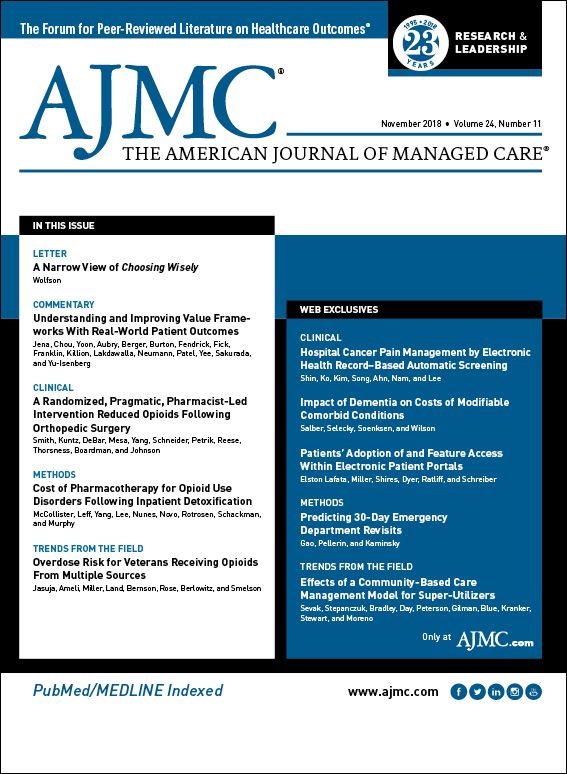- Center on Health Equity & Access
- Clinical
- Health Care Cost
- Health Care Delivery
- Insurance
- Policy
- Technology
- Value-Based Care
From the Editorial Board: Glen D. Stettin, MD
Nobody intends to get addicted to opioids. Sadly, it happens far too often. More sadly, it is easier to get addicted than to get unaddicted.
Americans are 4.8% of the world’s inhabitants, yet we consume a highly disproportionate share of many commercially available opioids, including hydrocodone (99.7%), oxycodone (69%), morphine (49.6%), hydromorphone (45%), and fentanyl (29%). We consume more than 5 times as many daily doses as Europeans, and our use has quintupled since the 1990s.
Americans overconsume opioids for several reasons. Culturally, and I generalize, we believe pain should be treated. We believe drugs are better than nondrug treatments and opioids are better than nonopioids. Our preferences, fueled by marketing budgets of opioid manufacturers, nudged us to seek opioids for pain and our physicians to oblige. Easy access to prescription opioids made getting addicted easy.
There is good news. America’s consumption of prescription opioids has been declining since 2012. During this time, pharmacy benefit managers have expanded efforts to accelerate this trend. For example, the CDC’s revised opioid prescribing guidelines in 2017 were quickly implemented by Express Scripts to reduce unsafe use of prescription opioids. We focused on making better decisions—fewer and smaller prescriptions; safer dosing, formulations, and combinations—the easiest decisions for physicians, pharmacists, and patients. We implemented coverage policies to curtail overuse and ensure needed access. We provided patients with education, monitoring, counseling, and safe in-home disposal of unused opioids. As a result, first-time users’ average day supply per fill declined by 55%, from 18.6 to 8.3 days, and 93% of first-time fills are now for 7 days or less. And 78% of new users with initial prescriptions for long-acting opioids are redirected to safer, short-acting opioids.
But let us not fool ourselves. We have more to do to prevent and treat opioid addiction. We must advocate for solutions that eliminate unsafe opioid exposure and improve access to effective addiction treatment. Practices can set defaults and prompts in electronic prescribing systems to increase adherence to prescribing guidelines. Examples include defaulting initial prescriptions to a 3-day supply and prompting physicians to reconsider requests for long-acting opioids in opioid-naïve patients, regimens that exceed dosing guidelines, and unsafe combinations of opioids with benzodiazepines or muscle relaxants. Policy makers can improve prescription drug monitoring programs and require that prescribers use them. For people struggling with addiction, we need safer and more effective ways to help them transition off of opioids completely or onto maintenance therapies. Finally, we need easier access to naloxone for preventing overdose deaths.
Our work in preventing and treating opioid addiction may never be complete, but it will be increasingly successful if we continue to focus on making it harder to get addicted and making it easier to get unaddicted or, at least, easier to get maintenance treatment that restores dignity and function to those who got addicted despite their best intentions.

Trends in Hospital Pricing for Vulnerable Emergency Department Users, 2021-2023
December 4th 2025Self-pay emergency department prices rose significantly from 2021 to 2023, especially at for-profit and system-affiliated hospitals, highlighting growing affordability challenges for uninsured and underinsured patients.
Read More
Integrated Care for Chronic Conditions: A Randomized Care Management Trial
December 3rd 2025The authors sought to understand the differential impact of payer-led community-based care management approaches on stakeholder-oriented outcomes for publicly insured adults with multiple chronic conditions.
Read More

